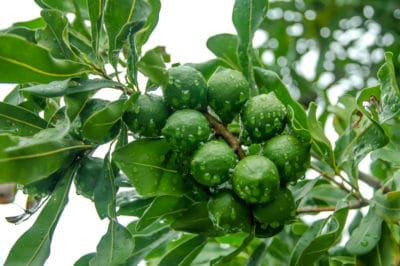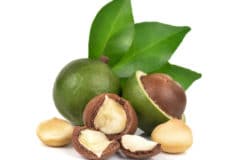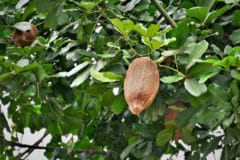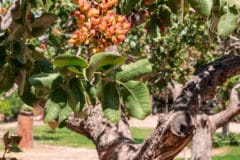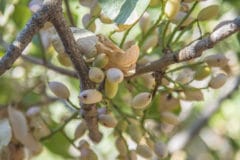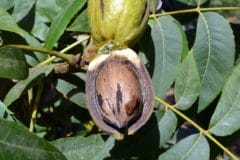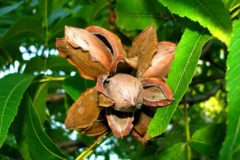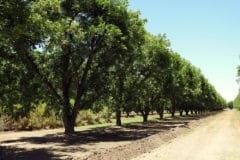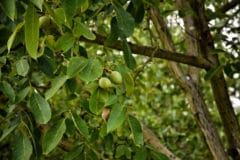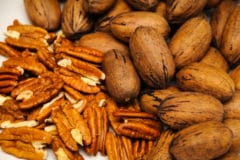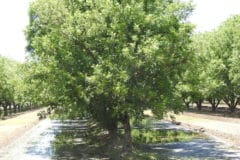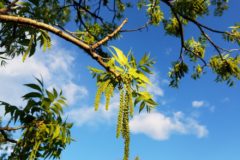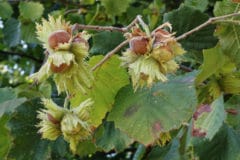Ancient Habitat
Today’s macadamia trees descend from ancestors that grew in the warm, wet rainforests of central Queensland. Fossilized pollen from those trees dates backs some 50 million years, when the rainforests covered most of Queensland’s eastern coast.
Archaeological digs near northeast Queensland’s Mulgrave River indicate that Australia’s First Nations were consuming macadamia nuts more than 60 thousand years ago. But the last Ice Age reduced the wild trees ‘growing range to a few patches along the Queensland rainforests’ Pacific fringes.
Macadamias in the Wild Today
Australia’s wild macadamia population grows at elevations up to 2300 feet (700 meters) where yearly rainfall exceeds 39.4 inches (1000mm). They thrive in a variety of rainforest soils from rocky scree slopes to mineral-rich rich volcanic ash. It’s common to find clusters of the trees in one area, while equally suitable area has none.
Expert gardener’s tip: One suggested reason for the clustering habit is that none of the native wildlife has jaws strong enough crack the shells and disperse the nuts.
Cultivation History
Queensland’s British colonists discovered macadamia nuts in 1857. Hawaii’s sugar cane growers imported their first macadamia trees as windbreaks in 1881. But it took until the 1950s to master the grafting and processing techniques necessary for commercialization. In 2017, worldwide production totaled 170,000 tons of in-shell nuts, nearly all of it from Australia, South Africa, Hawaii and Central America.
Expert gardener’s tip: For an idea of why the nuts are so pricey, compare those figures to the global almond harvest of more than 1 million tons.
Macadamias in the Mainland U.S.
In addition to year-round rainfall, macadamia trees require mild, frost-free winters. Just like pistachios, they’re suitable for USDA plant hardiness zones 9 through 11. You’ll find commercial plantings in coastal California and south and central Florida.
Macadamias as Ornamentals
Even if they didn’t give us the world’s most expensive nuts, macadamia trees deserve to be planted just for show. Their ornamental features include:
- Glossy, evergreen leaves up to 12 inches long. Deepening from pale-green or bronzy-pink in spring to dark green by summer, they provide year-round color.
- Long, bushy clusters of pink, purple or creamy-white flowers that lend a tropical touch to their surroundings.
- A large, spreading form. At up to 40 feet high and wide, they’re ideal shade trees.
Don’t live in a macadamia-friendly USDA zone? Given pots large enough to accommodate their roots and a sunny indoor shelter during winter, macadamia trees make very happy container plants.
